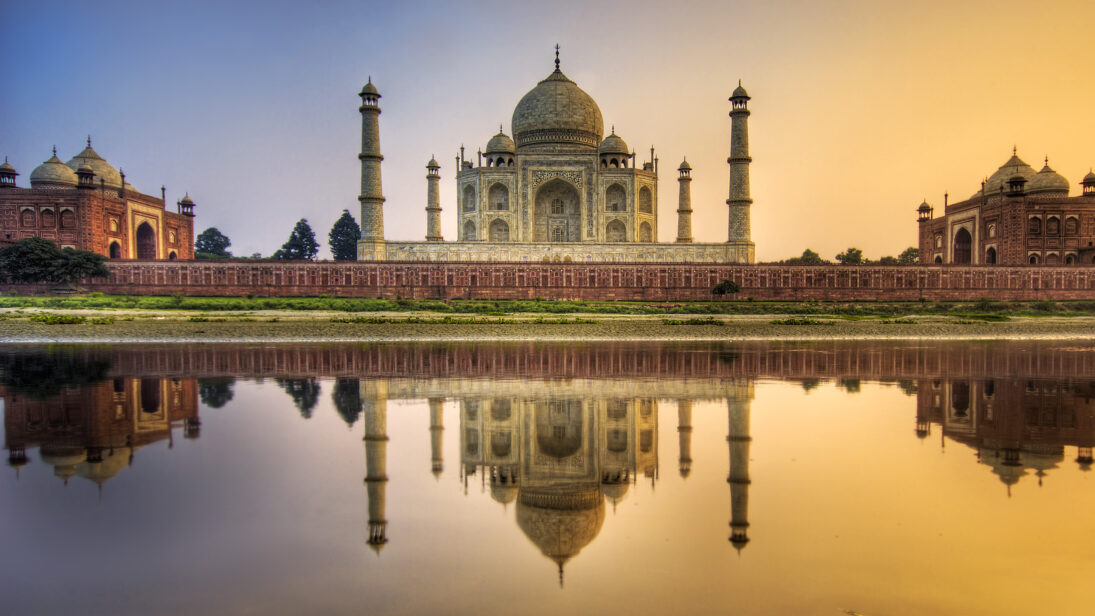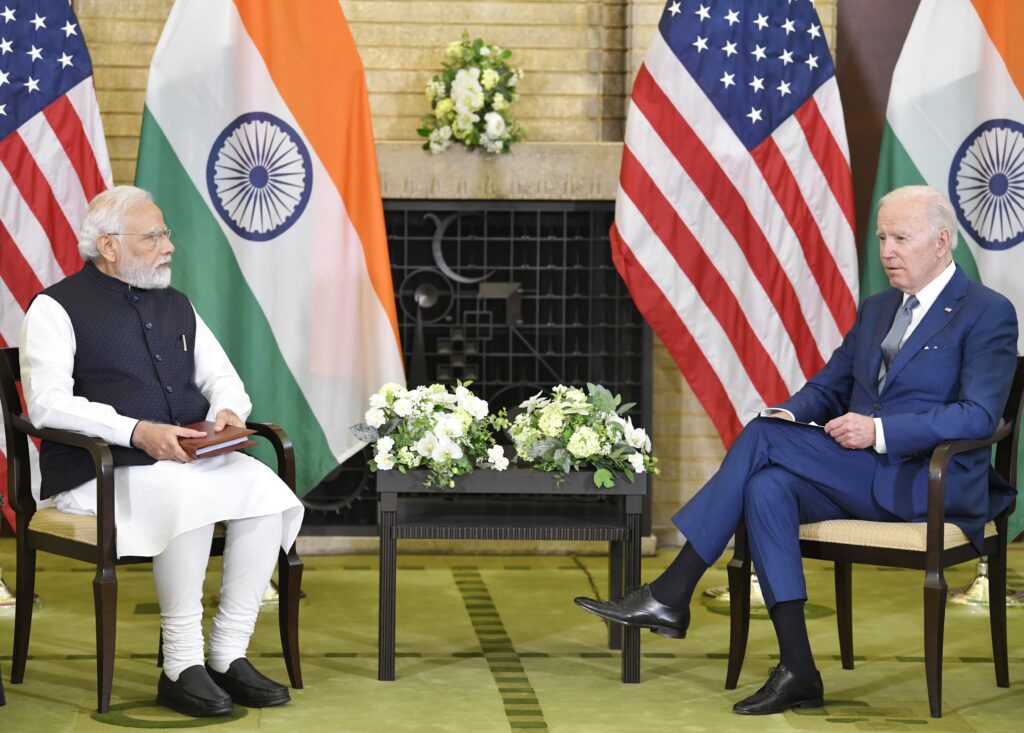
In 2023, India’s foreign policy embodied the principle of Vasudhaiva Kutumbakam or “the world is one family.” India provided a platform to Global South countries at the “Voice of Global South Summit” while using its yearlong role as chair of the G20 to advocate for inclusivity by ensuring the African Union’s membership.
Similarly, on the bilateral front, India built diverse partnerships with middle powers and great powers alike, such as Germany and Russia. India and France also consolidated their ties as both states increased their bilateral cooperation in niche areas like cyber and digital technology.
Perhaps most critically for India’s 2023, India affirmed its relationship with the United States through cooperative agreements that stretched from the “sea to the stars.” Despite episodic differences, the relationship is only likely to grow in 2024, so long as both sides do not view the partnership only as a path to counter China and attempt to holistically address all issues at hand.
G20 Success & Bilateral Exchanges
In September 2023, U.S. President Joe Biden visited India on the sidelines of the G20 Summit, an implicit endorsement of India’s leadership. The visit was only one demonstration of the United States’ support for India’s leadership of the G20 and the importance of their bilateral relationship. The Russia-Ukraine war did not deprive the India-led G20 of a joint communiqué, a shared priority for India and the United States. Biden’s September 2023 visit also came on the heels of Congressional approval for negotiations to manufacture the F-414 jet engine and India’s request to procure 31 MQ-9B remotely piloted aircrafts.
The Russia-Ukraine war did not deprive the India-led G20 of a joint communiqué, a shared priority for India and the United States.
Prime Minister Modi’s visit to the United States in June 2023 was high on symbolism and substance alike, publicly strengthening engagement on all fronts. Prime Minister Modi’s state visit provided the opportunity to address the joint session of the U.S. Congress and respond to U.S. reservations about India’s viability as a defense partner due to Indian aversion towards participating in collective defense efforts. Building off of India-U.S. coordination in 2023 on the Quad Counterterrorism Working Group, India will host the Quad summit with United States, Japan, and Australia in 2024.
As both India and the United States head to elections in 2024, there is a positive momentum to the relationship. India-U.S. ties enjoy bipartisan support in both countries as both states prioritize the perceived threat from China. Moreover, as India and the United States build habits of cooperation and “disagree without being disagreeable,” the bilateral partnership will withstand changes in political leadership and absorb minor diplomatic rifts.
Defense Ties & Evolving US-India Partnership
Not only has India’s designation as a ‘Major Defense Partner’ in 2016 enabled India to be treated at par with the U.S.’s other major strategic allies in defense and security, but it has also reduced regulatory barriers to trade. Both states have started negotiations over the Security of Supply Chain Agreement and the Reciprocal Defense Agreement in 2023, which will enable Indian and the U.S. companies to acquire defense equipment production contracts from each other’s respective countries. This enabled India to receive the Strategic Trade Authorization-1 (STA-1) status to transfer high end technology products to the U.S. in the civil and defense space sectors.
By signing foundational agreements like the General Security of Military Information Agreement (GSOMIA), Logistics Exchange Memorandum of Agreement (LEMOA), Communication, Compatibility and Security Agreement (COMCASA), and the Basic Exchange Co-operation Agreement (BECA), India took important steps to address the United States’ concerns associated with the transfer of critical technologies and defense systems. For instance, signing the LEMOA has provided India and the United States access to each other’s military bases for logistical support on a regular basis while ensuring structured defense cooperation.
Through the annual “2+2” Ministerial Dialogue and the Inter-Sessional Dialogue, both India and the United States have prioritized their defense and technology partnership. The inaugural meeting of the initiative on Critical and Emerging Technologies (iCET) occurred in January 2023, which is expected to promote cooperation on cybersecurity, space and aerospace domains. Launched in June 2023, the India-U.S. Defense Acceleration Ecosystem (INDUS-X), in collaboration with Innovations for Defense Excellence (iDEX) and the Defense Innovations Unit (DIU), has assisted in “co-developing and co-producing advanced technologies by Indian and U.S. start-ups.”

Chandrayaan-3 Mission and Space
Perhaps the most visible point of India-U.S. cooperation in 2023 was in outer space. After the Chandrayaan-1 mission that led to the discovery of water on the Moon in 2008, India and United States reunited for the Chandrayaan-3 mission, making India the first country to reach the lunar south pole. In 2023, India also signed the U.S.-led Artemis Accords to facilitate greater bilateral space cooperation between India and the United States.
Additional space and defense technology agreements complete the legacy of 2023 for India-U.S. relations. The Strategic Trade Dialogue and the U.S.–India Advanced Domains Defense Dialogue may facilitate technology transfers within the realm of space and Artificial Intelligence. The United States Air Force Laboratory has taken a step in this direction by leading new Cooperative Research and Development Agreements between the United Nations Space Force and an Indian start-up, 114AI, that builds dual-use software for space domain awareness.
Navigating Differences
Despite the positive momentum in ties, the India-U.S. relationship is likely to experience minor disturbances due to unaddressed issues that will persist in 2024. Even with the possibility of U.S. sanctions, India continues to purchase Russian crude oil and weapons as it seeks a strategic equilibrium between Russia and the United States. While India has previously received a sanctions waiver for Countering America’s Adversaries Through Sanctions Act in 2018 for its purchase of the Russian S-400 defense systems, enduring Indian defense engagement with Russia may potentially hamper defense partnership with the United States in the long term. Since 86 percent of Indian weapon systems’ are of Russian origin — a legacy of Cold War cooperation — U.S. policymakers understand that decoupling from Russia will take time. However, with the enduring war in Ukraine and evidence that Russia has targeted critical civilian infrastructure, Indian neutrality on the Russia-Ukraine war will be severely tested in 2024.
Similarly, escalation of the Israel-Hamas conflict could impact India’s strategic posture in the Indian Ocean. Since armed non-state groups have targeted merchant vessels off the Indian coast, with the Indian Navy foiling a hijacking bid along a bulk carrier, India will reinforce its status as a ‘preferred security partner’ by limiting external presence in the Arabian Sea. In this regard, India would prefer to evade the ‘Goldilocks Dilemma’ in its littorals, and would like the the U.S. naval presence in the Red Sea to be “just right” — neither too much nor too little — to ensure India’s maritime interests are protected during the conflict. For instance, despite joining the U.S.-led Combined Maritime Forces in 2023, the Indian Navy will continue to protect shipping routes along the Red Sea in its own capacity without joining the U.S. led coalition “Operation Prosperity Guardian” — an initiative to aid shipping along the Red Sea — to protect Indian strategic interests in the region.
Dialogues and joint exercises under the aegis of the Quad will also facilitate engagement between India and the United States.
Allegations that India sponsored the assassinations of Khalistani separatists on foreign soil, by both Canada and the United States, has led to significant diplomatic tension. This news has reignited the debate over whether the India-U.S. relationship is necessarily based upon values or only strategic priorities. Despite reassurances from Prime Minister Modi, inadequately addressing human rights and international law concerns may lead the United States to call out India’s human rights record on a wider scale. The issue has already received widespread attention from the U.S. Commission on International Religious Freedom, which implored the US government to designate India as a country of particular concern for committing atrocities against religious minorities within and outside its borders.
Looking Toward 2024
Despite these potential disturbances, the bilateral partnership will remain deep. India-U.S. convergence on key trade disputes and cooperative agreements is expected to expand commercial ties, with India becoming a part of the Indo-Pacific Economic Framework (IPEF). Similarly, Indian attempts at becoming a part of the clean and fair economy pillars within the IPEF will offer potential for collaboration on climate issues.
Defense ties will flourish further in 2024, as India and the United States will address the perceived Chinese threat in the Indo-Pacific by increasing maritime cooperation through undersea communication, intelligence sharing, and anti-submarine warfare technology. Dialogues and joint exercises under the aegis of the Quad will also facilitate engagement between India and the United States.
The United States increasingly views India as a strategic partner and has solicited Indian support in the event of potential military contingencies in the Indo Pacific. However, both sides will have to ensure that the partnership is not restricted to countering China through defense cooperation alone. Despite these closer ties, India will likely seek to uphold its policy against joining overt military coalitions. Instead, India will engage with U.S. allies through mini-lateral alliances to reassure the United States of its intentions — while safeguarding its strategic autonomy and diplomatic commitment to multipolarity.
Also Read: Pakistan in 2023: Another Year of Economic Turmoil, Political Unrest, and Security Challenges.
***
Click here to read this article in Urdu.
Image 1: Taj Mahal in India via Flickr.
Image 2: Modi and Biden via Flickr.


